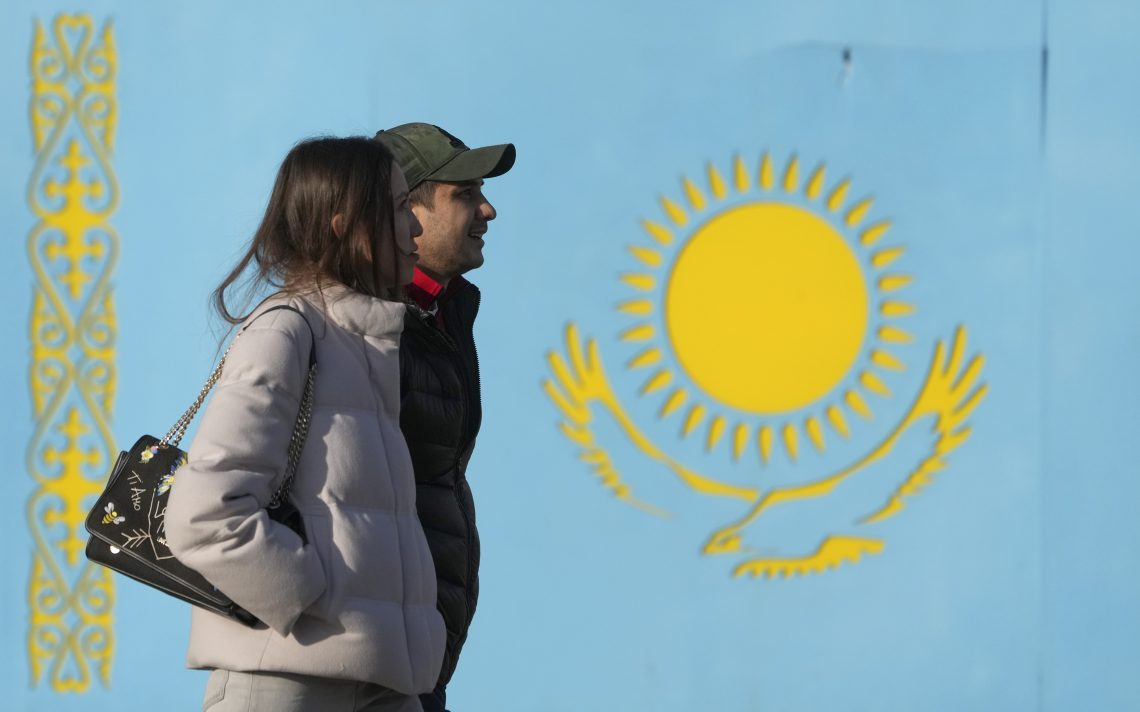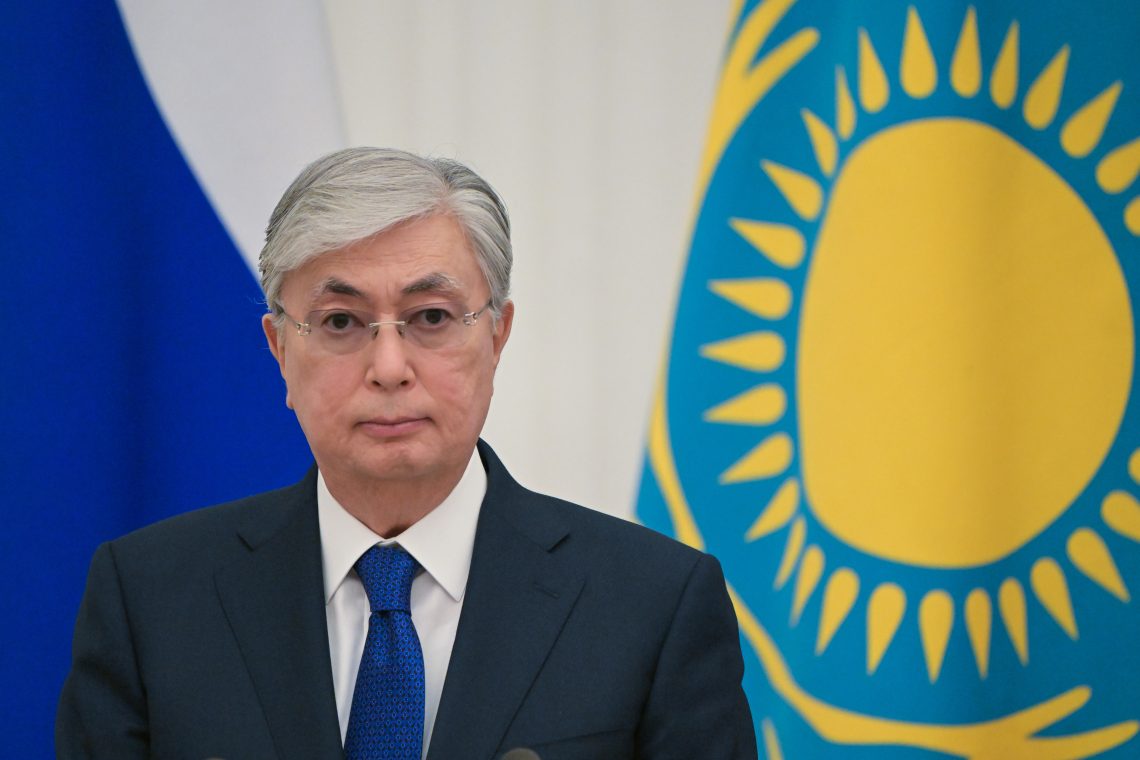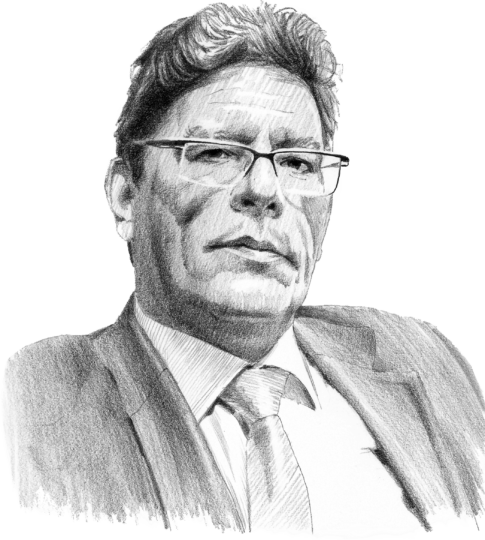Kazakhstan: What it was, what it means
The details of January’s turmoil in Kazakhstan remain hazy but the surprise on all sides betrays poor intelligence on the part of the country’s foreign stakeholders.

In a nutshell
- Kazakhstan’s January upheaval was an internal coup
- President Tokayev’s personal transformation was startling
- Nazarbayev’s swift ouster gives Russian elites much to think about
What happened in Kazakhstan in January 2022 is now more or less clear. The how and why will probably remain unknown. At this stage, it is only possible to evaluate the consequences of the country’s sudden plunge into turmoil – not so much for Kazakhstan itself as for its external stakeholders, especially Russia.
Kazakhstan’s descent into chaos was unexpected mainly because its causes seem to have been strictly endogenous. Every single one of the country’s allies and partners was caught by surprise: the West, despite its huge local assets (especially American and British oil and gas holdings) and dense political, cultural and educational ties; China, scrambling to safeguard its investments in the same areas; and Kazakhstan’s Central Asian neighbors – Uzbekistan, Kyrgyzstan, Turkmenistan – none of whom was any the wiser before the crisis struck.
Especially surprising was to see Russia caught in the same position. Its multifarious connections with Kazakhstan run much deeper: a common Soviet past, 3.5 million ethnic Russians resident in the country (18 percent of the populace, mostly concentrated in the northern areas bordering on Russia), the Baikonur Cosmodrome, currently leased to Russia, among other things. As recently as December 28, 2021, at the Commonwealth of Independent States summit in St. Petersburg, President Putin chatted courteously with Nursultan Nazarbayev, Kazakhstan’s “national leader for life,”while pointedly ignoring the country’s purely titular (or so it seemed at the time) president, Kassym-Jomart Tokayev, even allowing himself some snide comments to the camera on the quality of Mr. Tokayev’s address. It is telling that even after the recent events in Kazakhstan, President Putin still seems unable to get President Tokayev’s name right, constantly garbling it in various ways during online conferences and negotiations. To be sure, Kassym-Jomart Kemelevich Tokayev is a mouthful; on the other hand, Putin managed to quickly learn the full name of Turkmenistan’s president, Gurbanguly Myalikgulyyevich Berdymukhamedov, pronouncing it smoothly and easily on public occasions.
Inside job
Many pundits sought to uncover traces of prior Russian involvement, asking how it was possible for Russia to organize a “peacekeeping” mission that managed to transfer and airlift thousands of troops to Kazakhstan in 24 hours (including token contingents from Armenia, Belarus, Kyrgyzstan, Tajikistan and Uzbekistan as part of the Collective Security Treaty Organization, or CSTO). Here the best antidote to conspiracy theories is Occam’s razor – Russia did it because it had the capability. This suggests it may be time to reconsider judgments about Russia’s military readiness for other potential crisis situations, but that is a different story.
All those who had jumped to interpret the events as Russian aggression and occupation wound up with egg on their faces.
Kazakhstan’s few opposition figures, all in exile (there has not been an active domestic opposition for quite some time), were also out of the picture. For example, the fugitive banker and politician Mukhtar Ablyazov, already facing two detention orders from the British High Court for embezzling $3.7 billion from investors and contempt of court, spared no effort to present himself as a protest leader and even claimed to have set up a “coordination center” (in Kyiv, of all places), but he did not influence events in any way. Even President Tokayev, who periodically referred to “foreign puppeteers” and “terrorists” imported to Kazakhstan for nefarious purposes of “external aggression,” never claimed the unrest was inspired by the old opposition – a rather painful cut for those political exiles.
The official version of events, claiming the influence of outside actors, seems very shaky. No aggressor nations or individual organizers of the unrest have yet been named; no rank-and-file terrorists or foreign mercenaries have been paraded before the cameras, either. The only attempt to do so, with the hapless Vikram Ruzakhunov, a visiting Kyrgyz jazz musician on tour in Kazakhstan, was quickly debunked and hushed up; its patent absurdity speaks for itself.
There would have been nothing improbable in the involvement of foreign nationals and radicalized Muslim fighters. For example, one of Mr. Nazarbayev’s nephews, Kairat Satybaldy (who started as an official of the National Security Committee (NSC), then cycled through a series of government positions before going into business and quickly becoming one of Kazakhstan’s wealthiest men), has long been known as a powerful patron and sponsor of radical Muslims in Kazakhstan and the Central Asia region. He allegedly helped finance secret training camps in the remote mountains on Kazakhstan’s southern border with Kyrgyzstan and Uzbekistan. Until recently, these camps were said to enjoy the protection of Kazakhstan’s security forces (Mr. Satybaldy’s brother Samat Abish was, by lucky coincidence, the first deputy chairman of the NSC). But even if foreign combatants were involved, it seems reasonably clear (and is confirmed by past practice) that they were directed from Kazakhstan.
Since the result of Kazakhstan’s brief turmoil was a deep redistribution of power within domestic elites, that must have been the main driver from the start. These days, many people are rereading two excellent guides to politics of this sort, Curzio Malaparte’s Coup d’Etat, the Technique of Revolution (1932) and Edward Luttwak’s Coup d’Etat: A Practical Handbook (1968). The situation of a lawful president transforming his authority from illusory into actual can scarcely be called a coup. And yet, if anyone writes a book about the Kazakh events of early 2022, it will be placed on the same bookshelf.
Winners and losers
The protests began on January 2 in Kazakhstan’s oil and gas-producing provinces, also the country’s poorest. They initially limited themselves to purely economic demands and seem to have been truly spontaneous. It is not clear which elite group decided to use them against their internal competitors, whose nerves had snapped first.
To be sure, the lower classes were involved, too; perhaps Muslim extremists, but mostly mambets, as they are called in Kazakhstan – young people from rural areas, uneducated, aggressive, flocking to major cities for a better life, uniting into criminal gangs and mobs. Muslim extremists and mambets are two overlapping sets. There is nothing new here, as a similar dynamic can be observed in many countries. There is nothing original in simpletons being used by elites as cannon fodder. It is an old story that continues to be very popular in the repertory of political theater.
Western countries and China should acknowledge that the quality of their foreign policy and intelligence expertise was unbelievably low.
The winners and losers of this particular drama are now most evident. President Tokayev – and those who managed in time to reorient toward him – has come out on top. Mr. Nazarbayev has lost, along with family members controlling virtually all of Kazakhstan’s key institutions and businesses, proteges who failed to betray their benefactors in time, and a few loyalists who remained faithful to the old “national leader” to the end. The latter included Karim Masimov, who twice served as Nazarbayev’s prime minister and ran his administration in the interim. When the unrest broke out, he was promptly sacked from his post at the head of the NSC, accused of high treason and arrested.
Now, with the battle over, the winners have to scrub blood and ashes off the streets (a work in progress), produce an official version of the events (less than convincing so far) and share the spoils (a very active process of late).
Tokayev’s transformation
The foregoing should not be taken as downplaying the tragic dimension of turmoil in Kazakhstan. The death toll of the protests is unknown and likely to remain that way. Even so, to the detached professional, there is a peculiar, almost Shakespearean beauty in the course of events.
Take the amazing transformation of Mr. Tokayev. It took just one day – January 4, 2022. He addressed the nation twice on television. In the morning, he appeared weak and clueless, murmuring promises of meeting the protesters’ demands. No one was expecting anything else – he had always been perceived as a limp puppet and some malicious tongues called him “Nazarbayev’s furniture.” But in the evening, suddenly, there was iron in his voice. “The authorities will not budge,” he said, vowing to act with “utmost severity” and shocking everyone with the announcement that he had taken control of the Security Council (which according to Kazakhstan’s Constitution is strictly impossible, since that position had been awarded to Mr. Nazarbayev for life). Immediately armored vehicles and troops appeared on the streets of Almaty, awash in violence and looting, to engage in violent skirmishes with protesters and rioters. The next day, a state of emergency was declared, and key figures of the old regime – like Karim Masimov and other generals in charge of the security services – began to be apprehended one by one. A wolf suddenly emerged from under the sheep’s clothing, growling.

The wolf’s subsequent actions are also quite interesting. Before launching a second, full-blown purge of Kazakhstan’s political and economic networks, crammed with Nursultan Nazarbayev’s daughters, sons-in-law, nephews, more distant relatives and clients, Mr. Tokayev took the startling step of firing his own nephew, who was holding down a not very crucial but still prominent and lucrative post at a state-owned holding company. Outside the country, nobody even noticed the move, but this departure from the clan politics practiced in many Asian countries made a powerful impression on ordinary citizens of Kazakhstan.
There was also a dark beauty in how Mr. Nazarbayev suddenly and mysteriously dropped off all radar screens, prompting all sorts of wild rumors – that he had fled the country, been incapacitated, or even died before the revolt. As it turned out, he was very much alive. But for almost three weeks, the supposedly lifetime dictator was nowhere to be seen, until his televised address on January 18. There the “national leader” gave the appearance of a completely broken man. He denied any power struggle among Kazakhstan’s political elite, called himself “a retiree” and appealed to the nation to rally behind President Tokayev.
His address bore the hallmarks of a complete surrender. When and where it was recorded is unknown. Attentive viewers noticed that the windowless room where Nazarbayev spoke to the camera was identical to one of the conference halls at Kazakhstan’s embassy in Moscow. Everything else was guesswork. Even so, the inescapable conclusion is that Kazakhstan’s elderly king had abdicated and thrown himself upon the mercy of his younger successor.
Rare accomplishment
Finally, the emergency insertion and equally rapid withdrawal of CSTO troops, managed by the Kazakh side from beginning to end, was also beautiful in its own way. Initially, on January 5, the Kazakh authorities began making increasingly desperate calls for help, garnished with phrases like “external aggression” and “terrorist threat” to give them more persuasive power. There were panicked news flashes on the capture of Almaty International Airport by a group of unknown belligerents (it would soon transpire that 40 minutes before the seizure, all the airport’s security personnel had been ordered to leave the airport, after which it was indeed attacked and ransacked). Over the course of the day, the Kremlin kept saying that the turbulence was an internal matter that Kazakhstan could well resolve on its own.
During the night of January 5-6, this position was abruptly reversed and CSTO intervention was decided. Troops prepared to deploy by airlift, and practically as they were seated in their transport planes, it turned out that Almaty airport, lost with such mysterious ease, was just as magically restored to government control. At the same time, the Kazakh security forces clearly gained the upper hand in street clashes. Even so, the military machine had been set in motion and the first contingent of CSTO troops touched down in Almaty, securing the airport and several other facilities. They did not, however, take part in any fighting, which Kazakhstan’s army and police were handling on their own. The last embers of the revolt were quickly snuffed out.
On January 11, President Tokayev announced that the CSTO mission had successfully ended, and that the withdrawal of “peacekeepers” should start in two days and be fully completed in ten days’ time. This sounded less like a statement of fact than a pressing demand, and it was met. All those who had jumped to interpret the events as Russian aggression and occupation wound up with egg on their faces. Mr. Tokayev played the game masterfully, using outside support to legitimize his authority while freeing up forces needed to put down the rioters and repress political rivals over a few crucial days.
Russia and the CSTO reaped their fair share of benefits as well. To show the flag, to faultlessly conduct a faultless large-scale legal, organizational and military operation without firing a single shot or losing a single man, to avoid becoming entangled in other people’s quarrels and then depart in two weeks with an unblemished reputation – that is a rare accomplishment in today’s world.
Costly surprises
The conclusions to be drawn by Western countries and China are more problematic. For a start, they should acknowledge that the quality of their foreign policy and intelligence expertise was unbelievably low. This appears to have involved few serious consequences in Kazakhstan. President Tokayev has promised to preserve the country’s multivector foreign policy while continuing to solicit and protect foreign investment. In addition, he has pledged to tackle corruption (certain measures have already started) and initiate a broad-based democratization campaign (whose results, if any, we must wait to see).
But surprises of the sort that took place in Kazakhstan, in other places, could prove much more costly. This is probably the thinking in Moscow, which means it is globally significant.
For several years, the main source of intrigue in Russian politics has been the prospect of President Putin’s departure and the so-called “‘transfer of power” to his ultimate successor. I have several times stressed the inevitability of this development; moreover, I still believe that the process began in 2020, only to be almost immediately put on hold by the coronavirus pandemic.
The purely endogenous causes of Kazakhstan’s internal unrest have seriously amped up the unpredictability of Russian politics.
Experts thought that a scenario similar to the one envisaged for Nazarbayev’s Kazakhstan, mutatis mutandis, seemed the most likely for Russia: the aging president would smoothly transfer most of his official positions to a successor of his choice, transitioning into the less burdensome role of “father of the nation” – all the while remaining on the political scene and, as it were, in the wings, ready to take back control if needed. The successor, bound hand and foot, would be running the country in purely technical terms, keeping things stable and ensuring continuity in domestic and foreign policy. In addition, of course, he would safeguard the security of the patron and his clientele.
This would not be a repeat of the experiment with Dmitry Medvedev’s presidency (2008-2012) when Putin moved into the prime minister’s chair but retained his political leverage and ability to exert direct control. In this case, a semiretired Vladimir Putin would still exert control, but of a much more remote kind.
Implications for Russia
Now that scenario can almost certainly be discarded. Kazakhstan has shown that even the most pathetic political puppet can come alive and rip away his strings, even in a country whose political realm appeared much more uniform than even Russia’s. The risks for the Russian political elite are too serious.
A transfer of power remains inevitable, if only for biological reasons. That leaves two options. First, there could be a disorderly succession, replete with all kinds of unpredictable consequences, including reckless foreign adventures. Alternatively, various scenarios for an orderly succession could be worked out – some of them possibly also involving foreign policy stunts, of what kind is impossible to guess. The scenario of “collective government” was tried after Joseph Stalin’s death and found to be utterly useless, a fact well remembered in Russia. The conclusion is that some unused way can be found to plan for the power transition.
In any case, the purely endogenous causes of Kazakhstan’s internal unrest have seriously amped up the unpredictability of Russian politics. It turns out that Kazakhstan was helping shape Russia’s political future, not the other way around.








